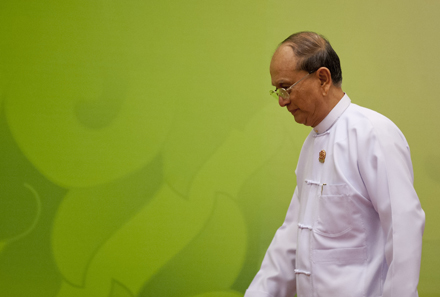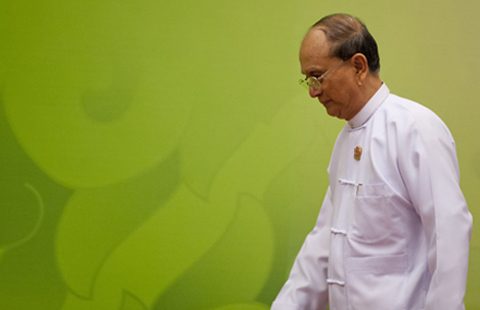
This column was published in The Myanmar Times on Monday, 30 November 2015
In December the Association of Southeast Asian Nations is scheduled to launch the region’s “economic community”. It is designed to support the greater enmeshment of the 10 economies, leading, in theory, to harmonious integration.
Nobody is quite sure how it will work in practice, with all of the ASEAN elites reluctant to surrender any hard-won sovereignty.
Recent years of economic turbulence in the European Union have not helped. Supra-national economic integration looks like it might be too hard, especially where there are major disparities in economic size and potential.
The obvious issue for ASEAN is that it is a long way from the bright lights of Singapore’s Clarke Quay to the lonely paths of the Chin hills. Tying together a region of such great diversity and inequality will never prove straightforward.
Nevertheless, there will be muscled-up efforts to smooth out aspects of the regional economic picture. Much of this will serve to facilitate elite connection and the types of trade and travel that appeal to their interests.
For the rest, time will tell if policies can be implemented that give ordinary workers and businesspeople a chance to enjoy the benefits of greater ASEAN connectivity. The most important potential upside could come with the loosening of regulations for regional labour migration.
Myanmar is one country with a sizeable part of the population already outside its borders, with millions in Thailand and significant numbers in Malaysia and Singapore too.
Myanmar was long judged a pariah by its wealthier and sometimes more democratic neighbours, but its recent election promises to change the tone of regional interaction.
For a start, there are the historically acrimonious relations with Thailand. These neighbours share a meandering border, and a long tradition of sporadic warfare. Since World War II the ethnic minority armies in their shared borderlands have mediated much of that conflict. Some Myanmar nationalists have consistently decried Thai support for this rebel “buffer”.
Thailand, for its part, has enjoyed decades of almost uninterrupted economic growth, and even the regular bouts of elite political brawling have yet to halt its gallop into the ranks of middle-income prosperity. The contrast with Myanmar is stark.
Yet what Myanmar now has in its favour, especially compared to Thailand, is a political environment that looks much more welcoming of democratic interests. This puts it in rare company across ASEAN, where most countries are ruled by the same powerbrokers, year after year, decade after decade.
Even in some places where elections are held – like in Singapore, Malaysia and Cambodia – there is no tradition of transferring power to the opposition.
In certain cases, opposition movements are barely tolerated. And in Vietnam, Laos and Brunei there is little space for dissent from orthodoxies that have been entrenched for more than a generation.
What the November 8 election in Myanmar shows, however, is that previous political practice is not always a useful guide to the future. Daw Aung San Suu Kyi’s National League for Democracy now enjoys an overwhelming popular mandate and an apparent acceptance on the part of the military leadership that the people’s will should be respected. Platitudes aside, this will probably be a messy process.
But it should get entrenched elites in other parts of ASEAN thinking about their own futures. With a newly democratic government and the strong support of the rest of the world, Myanmar could present a fresh challenge in a region where non-democratic norms have prevailed.
Those norms make sense when the majority of ASEAN states have little interest in real change. Myanmar, particularly if Daw Aung San Suu Kyi can take a share of serious power, could shift the equation. A high-level NLD presence at regional forums will be a reminder to many other ASEAN elites of their own harsh treatment of dissenters.
Depending on how Myanmar fares, the events of the past month could also have much wider regional reverberations. For instance, Daw Aung San Suu Kyi’s victory will likely inspire long-suffering agitators across the region. Every country has its renegades.
Right now, given their shared democratic credentials, the NLD’s natural allies around the ASEAN table are the Philippines and Indonesia.
But in time that group could grow, especially as Singapore is increasingly keen to advertise its openness to ideas and debate.
That could leave a small number of old-fashioned dictatorships – notably Thailand, Laos and Vietnam – looking for ways to keep pace when over 400 million other Southeast Asians are living in increasingly democratic societies.
ASEAN with a democratic Myanmar is, for now, just a suggestion. The notoriously conservative regional bloc may well revert to the standard pattern, stomping out any lofty expectations for region-wide change.
But as events in Myanmar have shown, patient optimists may eventually find their space to prosper.
Nicholas Farrelly is director of the Myanmar Research Centre at Australian National University and co-founder of New Mandala.
 Facebook
Facebook  Twitter
Twitter  Soundcloud
Soundcloud  Youtube
Youtube  Rss
Rss 